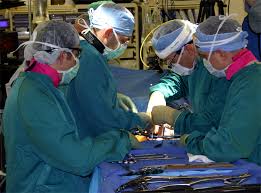
There are many conditions that can cause back pain in both children and adults. Chronic pain in the back and other parts of the body does, however, become more common as people age. It is one of the major causes of lost productivity across many industries, and sufferers will be quick to point out it also impacts their leisure time negatively. Fortunately, there are many wonderful facilities and professionals available throughout the United States who specialize in a procedure for severe back pain Baltimore MD.
Treating Severe Back Pain from Spinal Stenosis Baltimore
Spinal stenosis is a condition that is frequently responsible for pain in the lower back area, and sometimes also the lower extremities. It is most commonly caused by the normal aging process, which can include narrowing of the spinal canal. If it becomes too narrow, there can be too much pressure on the spinal cord, which is a part of the central nervous system. Spinal stenosis is sometimes also caused by birth defects or some forms of arthritis. While non-surgical procedures are always tried before more invasive interventions, there are two surgical procedures that can help with this condition.
- The lumbar laminectomy is a procedure for severe back pain Baltimore https://www.medstarunionortho.org that works by removing the back side of the spinal canal in the lower back area. It is called a lumbar laminectomy because “lumbar” means lower and “lamina” is the medical name for the back surface of the bony part of the spinal column. By removing a this part of the canal, the spinal cord has more room and the constriction that is causing difficulty for the patient may be eased.
- Posterior lumbar fusion is another surgical procedure that is sometimes used in cases of spinal stenosis. During this operation, the surgeon will attempt to fuse together two or more vertebrae (the small bones that make up the spinal column) into one single piece of bone using organic grafting material. This provides stability in the lower spine, eliminating movement that can constrict the spinal column or the large nerves that are directly attached to it. Patients are often surprised by how much movement remains in their spines even after a lumbar fusion.